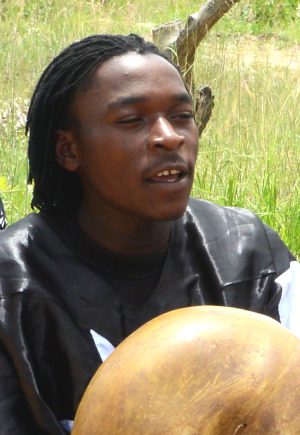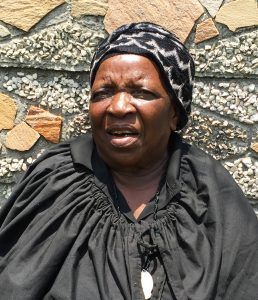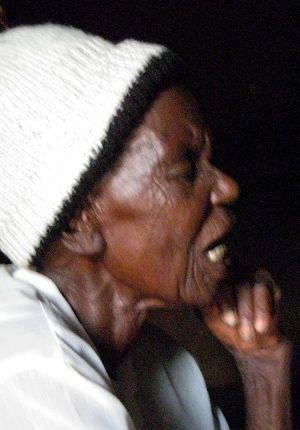Singing with mbira
Traditionally, vocals are added to the Shona musical mix by both mbira players and listeners. A kushaura (lead) singer is often one of the mbira players or a vocalist who is a member of the mbira group. Responding vocals (called variously kutsinhira, kubvumira, mabvumira or kudaira) may be added by other mbira players or anyone else present.
Huro (singing) includes mahon’era – low-pitched syllabic singing without meaning; chigure/magure – high pitched syllabic singing without meaning, including yodeling; and song texts.

Mbira lyrics
Mbira song texts vary in length from a few words to lengthy poems. Texts may include both lyrics specific to a certain mbira piece and lyrics which may be sung with any mbira piece. Some texts are ancient wisdom in “deep Shona,” while others may be contemporary personal commentary on current events or the music and dance of that moment. Non-musical Shona oral literature such as tsumo (proverbs) and nhetembo (praise poetry) may be included in mbira singing.
Singing during the course of an mbira piece may be a collection of “one-liners,” a cohesive text, or both. Meaning of mbira lyrics is often symbolic, and listeners interpret it in a variety of ways – which may or may not include the meaning intended by the singer.
Improvisation
Mahon’era and magure singing styles, without lyrics, use the voice as a musical instrument, imitating the mbira melodies, and responding and interweaving with them. The most improvisational versions of this type of singing are becoming rare today, due to the influences of pop and church music on mbira singing.
The mbira singer enjoys great freedom of personal expression, both in text content and musical improvisation.

Singing prayers
Mbira singing is often the singer’s prayer to the ancestors. Musician Irene Chigamba says, “Every time we play mbira, we are praying to our ancestors for help. Sometimes the prayers are about things so painful that we have to sing without words (using vocables).”
Shona traditional belief is that mbira singing, and well as mbira playing and mbira dancing, are inspired in the individual directly from the spirits.
Learn mbira singing
Instruction in mbira singing is included in workshops, lessons, and mbira camps offered by MBIRA, the non-profit organization. Learn!
To hear examples of great mbira singing, listen to the Vashauri Vol. 1 album.

Vocables for Mbira Singing
These “vocables”, and many more, which have no meaning, are used to sing along with melodic lines on the mbira:
Shona pronunciation guide:
- A as in father, e as in they, i as in free, o as in hoe, u as in who. R’s are lightly rolled. Adjacent consonants are combined. All syllables end in a vowel.
Used most for bass lines:
- ha, he, hi, ho, hu, hiya, heya, huwa, hereha, honde
- Examples of combinations:
- ha hiya he, heya ha hu, ha huwa huwa, hiya hiya honde
Used to imitate the mbira exactly, or for any melody:
- nde, nda
- Example of combination:
- nda nde nde nde
Used most in high shaura (lead) singing, including combinations:
- iye (yodelling from high to low),
ngore (from low to high pitch),
iya, aye, iyere, ayere, iyerere, iyare
ayowe, yowerere, ayowerere, iyowerere,
iyo, yu, ya, o, ye
Used any time:
- wo, woye, wonde, wondende
ALL of the above have infinite combinations and variations!
